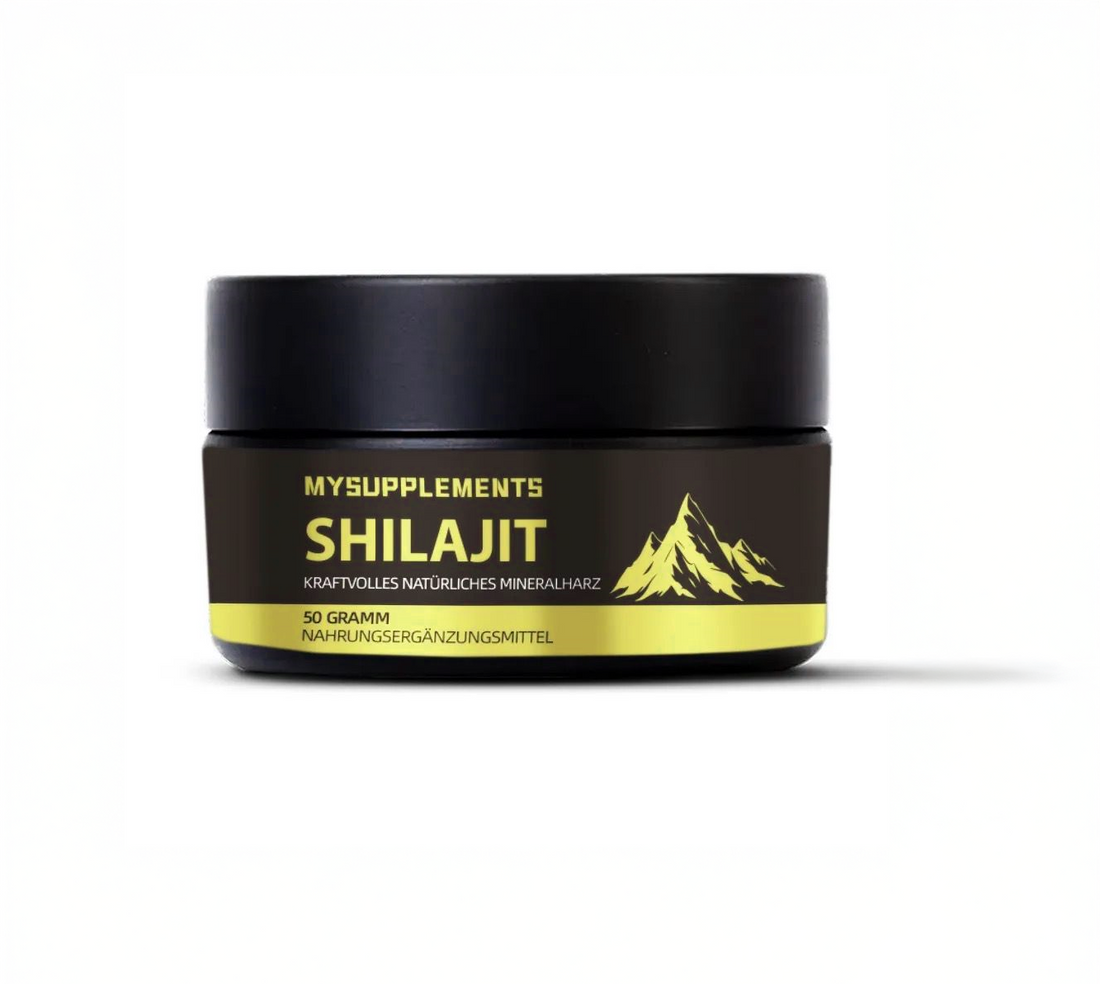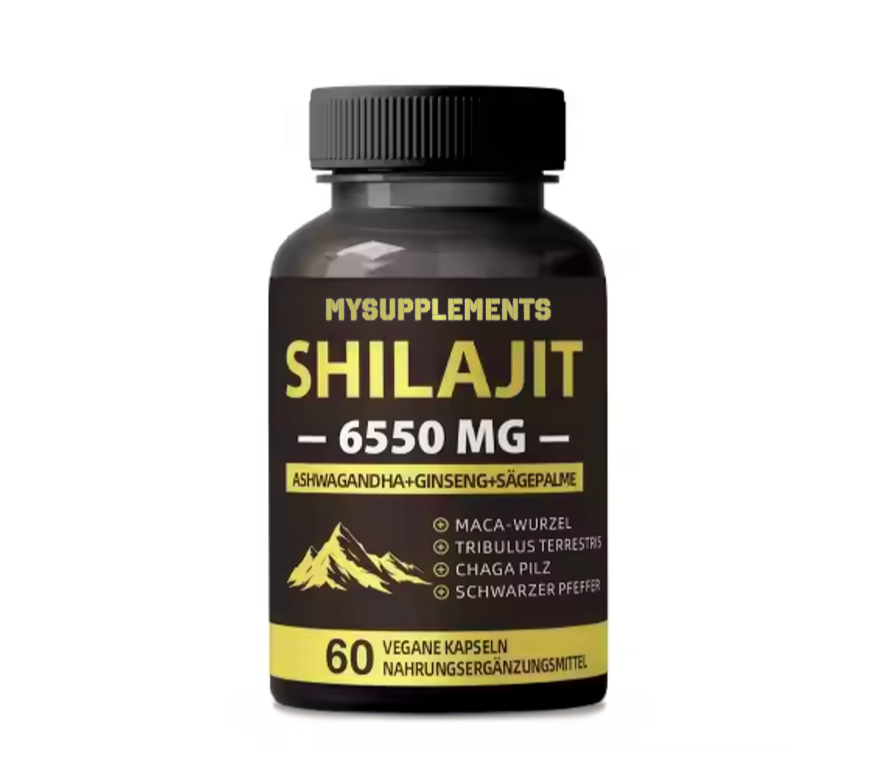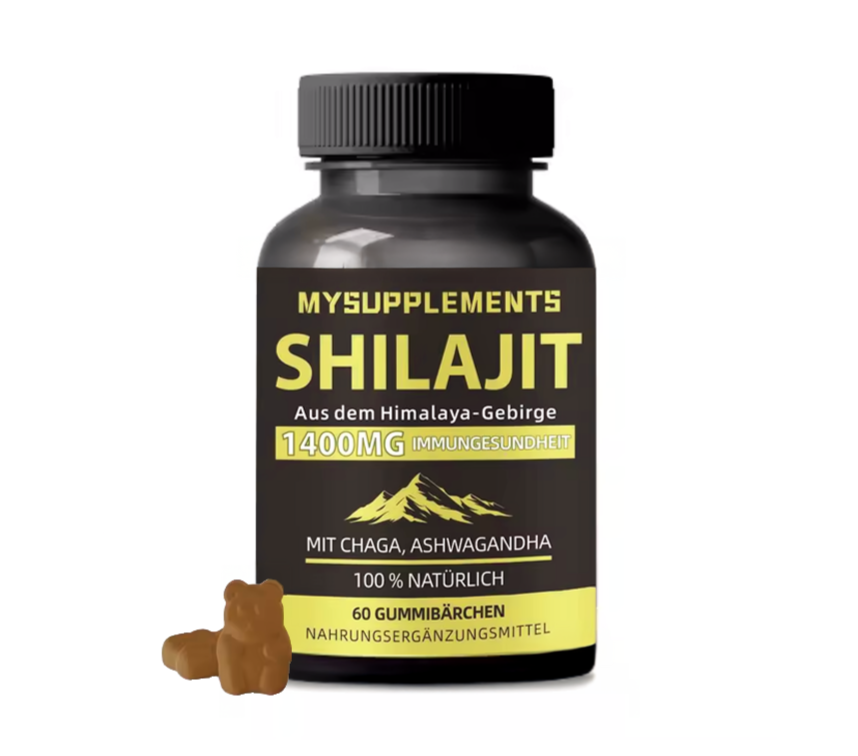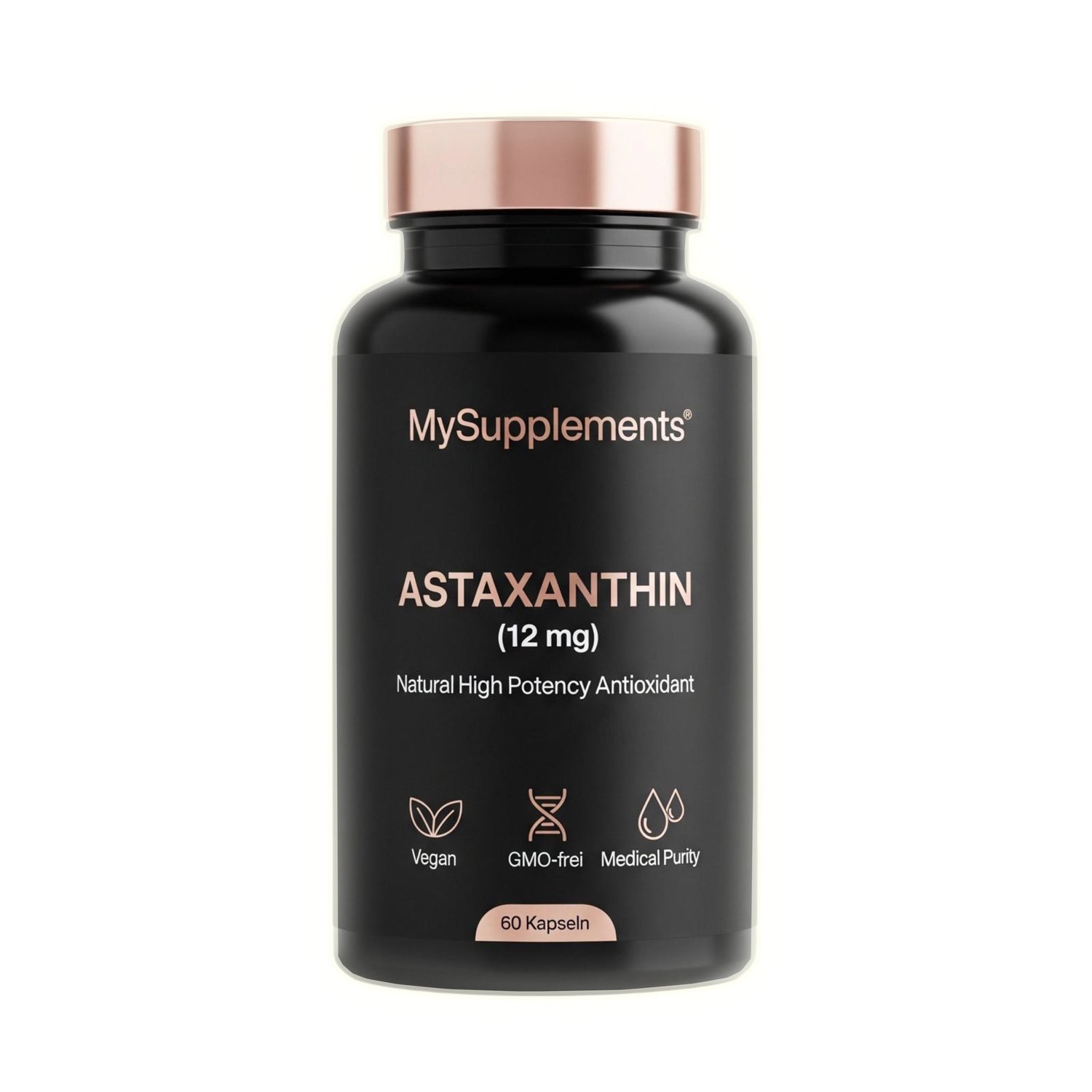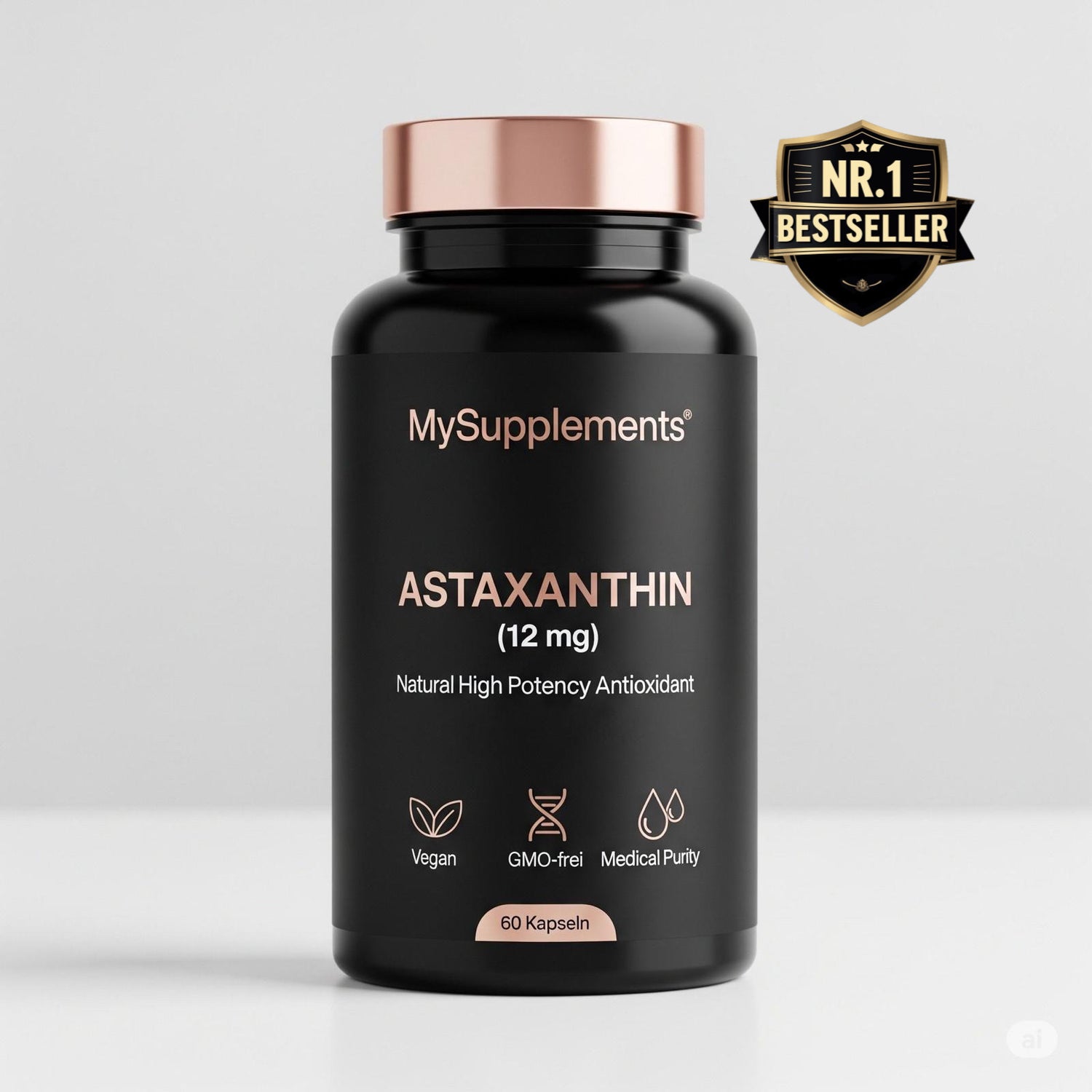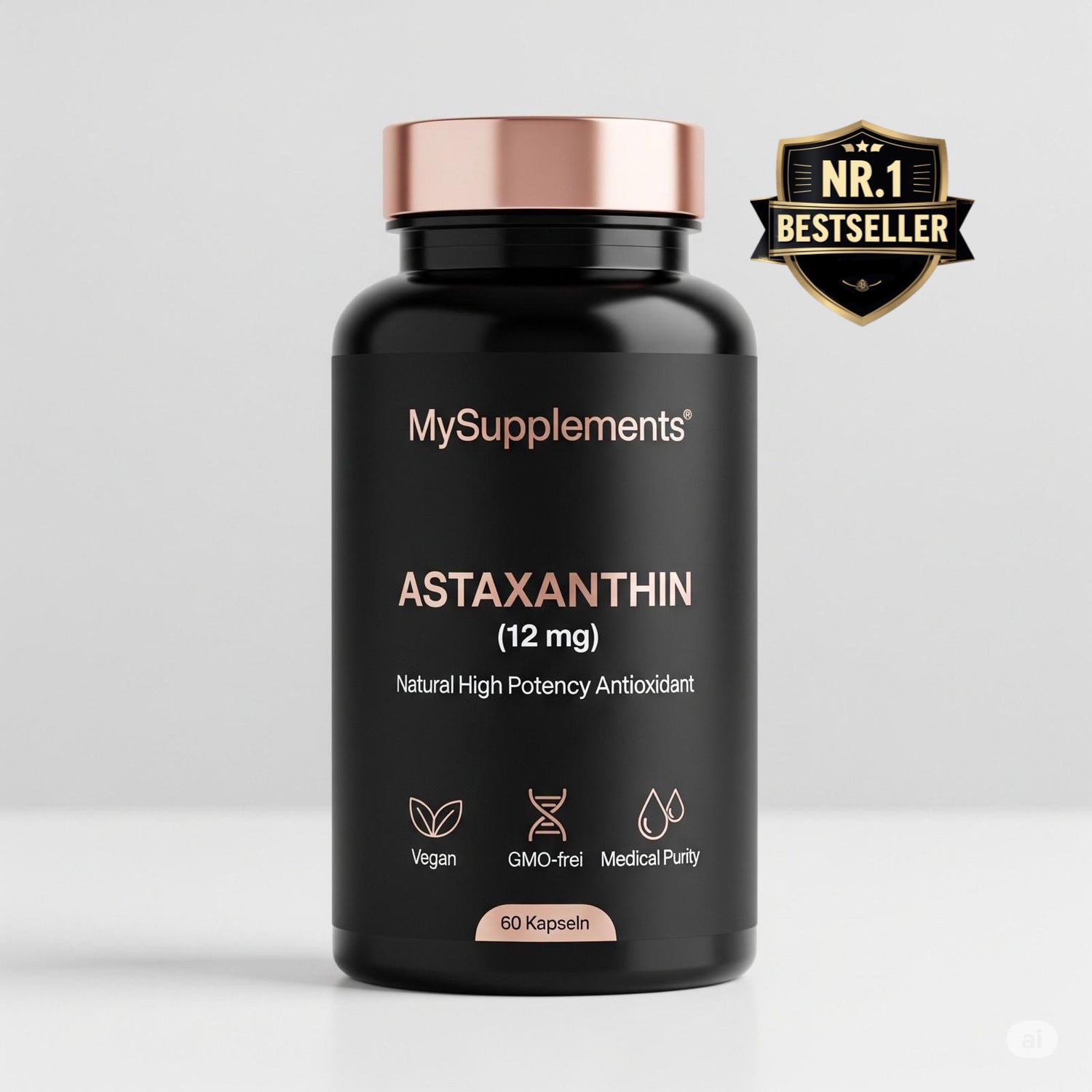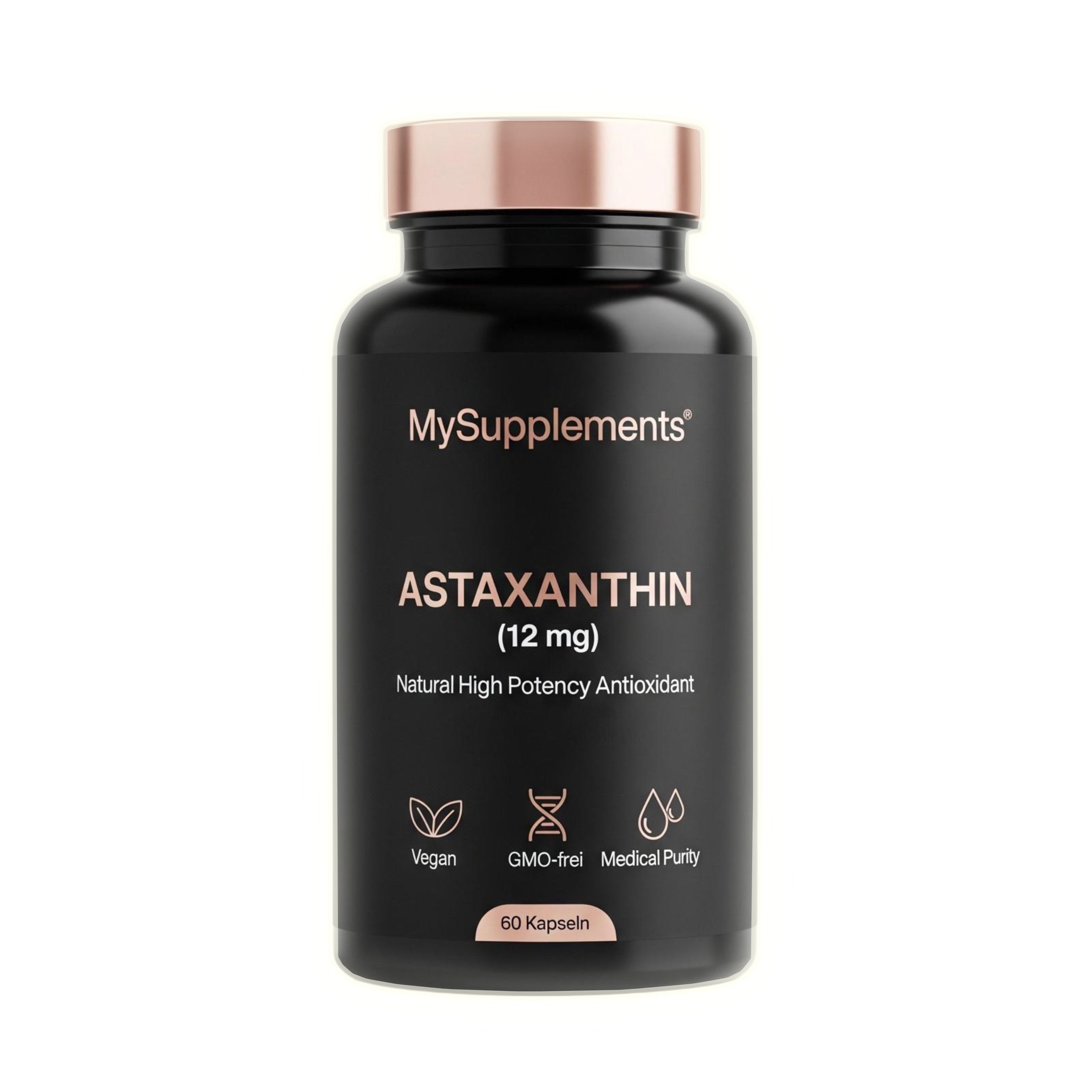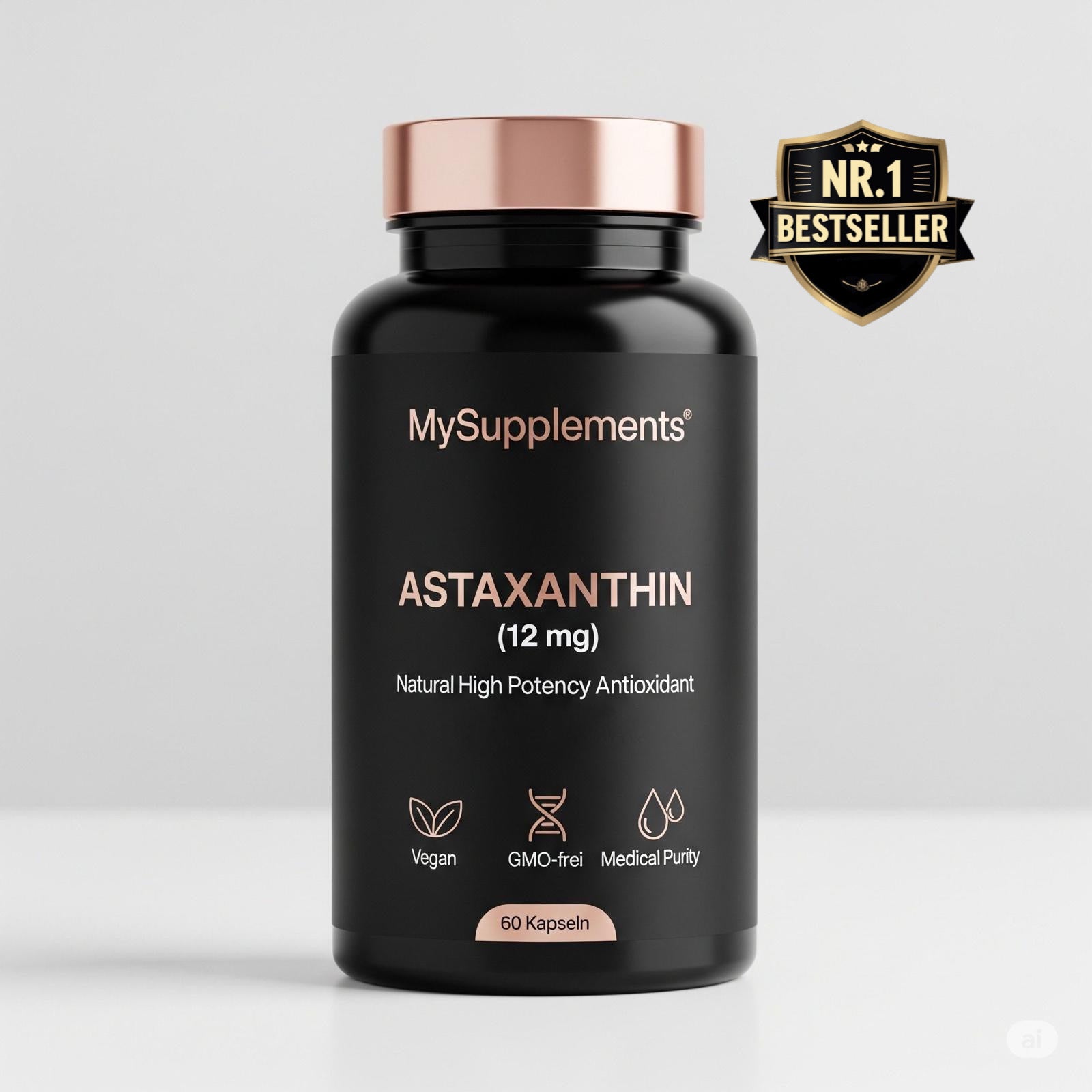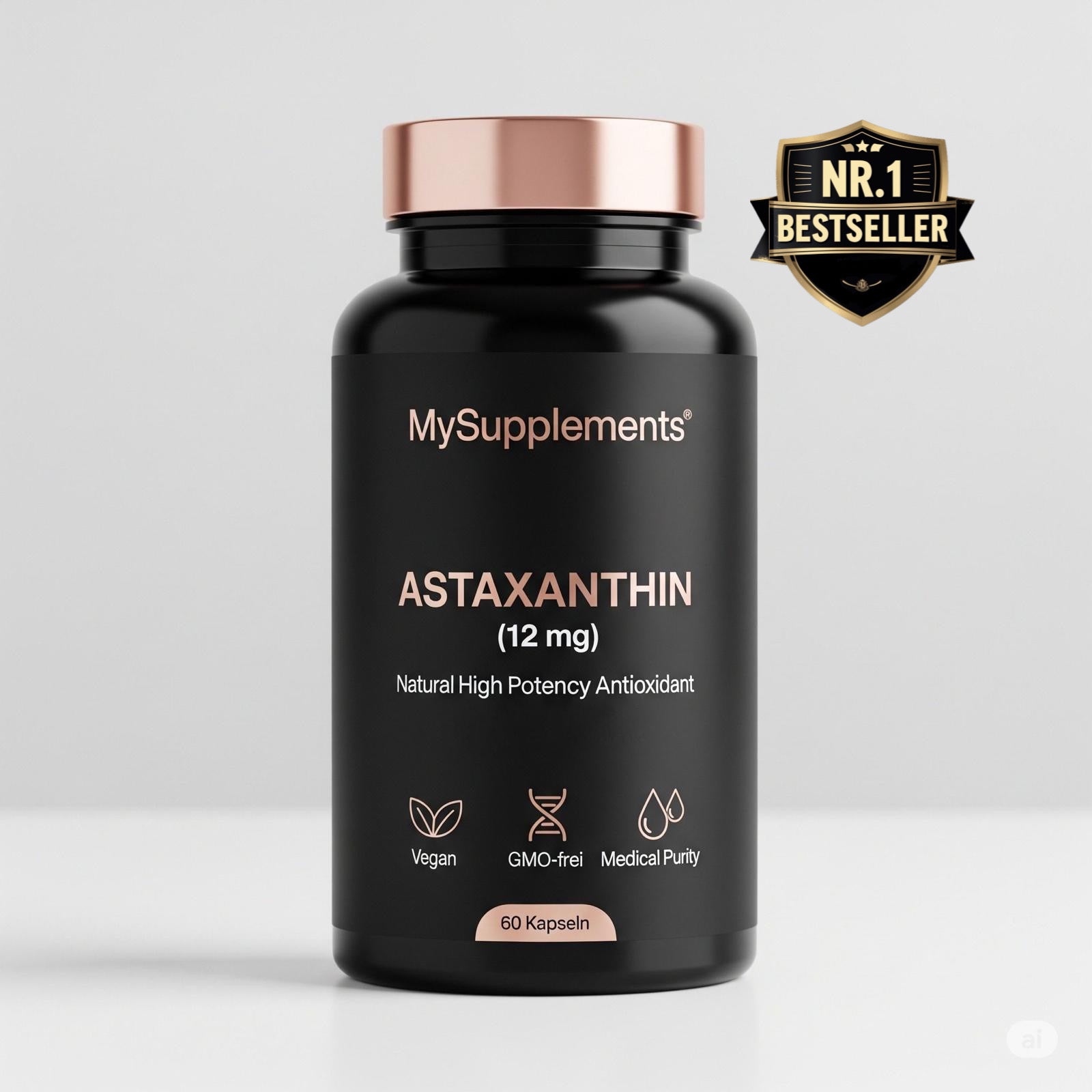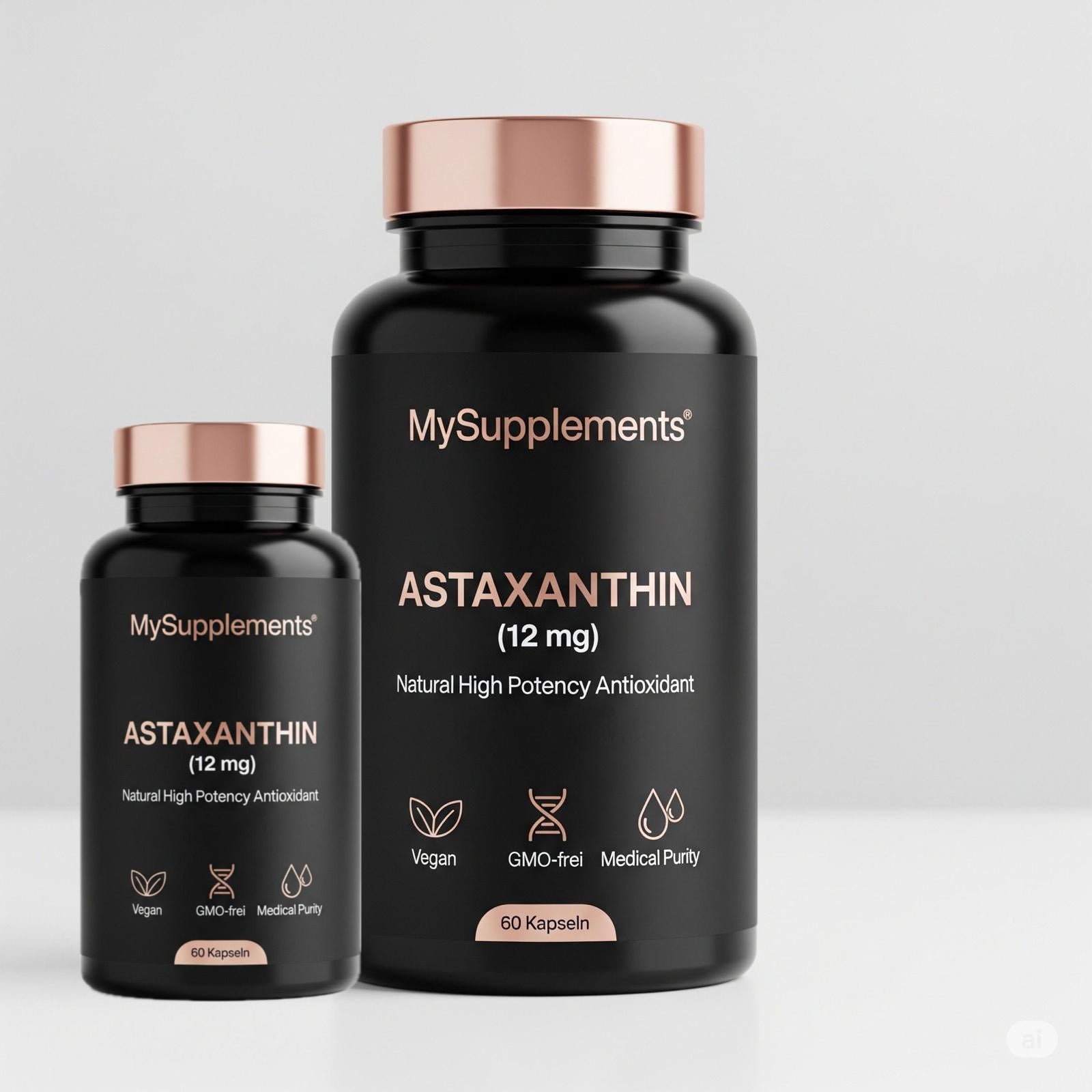✨ What is astaxanthin?
Astaxanthin is a potent, natural red-orange carotenoid derived from the microalgae Haematococcus pluvialis . It gives salmon, krill, and shrimp their characteristic color. As a fat-soluble antioxidant, it effectively protects cell membranes from oxidative stress .
🧠 Health benefits at a glance
-
Antioxidant power
Studies show that astaxanthin is one of the most powerful natural antioxidants – effective against free radicals that promote aging and inflammation. -
Skin & Anti-Aging
Taking 4–12 mg daily for 6–8 weeks improves wrinkles, skin elasticity, moisture and reduces age spots . -
Eye health
Works against eye strain (e.g. screen work), dry eyes and supports the retina . -
Heart & Metabolism
Improves LDL cholesterol, promotes vascular function and helps with metabolic syndrome and blood sugar regulation . -
Brain & Nerves
Can cross the blood-brain barrier, reduce inflammation in the brain, and support cognitive training . -
Joints & Bones
Protects bone mineral density, prevents osteoporosis, has an anti-inflammatory effect on joint pain . -
Liver & immune system
Supports liver detoxification and strengthens immune defense during physical exertion
💡 Experiences & Application
-
Dosage : 4 mg for skin and eye protection, 6–12 mg for skin/cognition targets; up to 24 mg daily was well tolerated .
-
Recommended dosage : Fat-soluble – take with a meal containing fat (e.g. oil, avocado) .
-
Safety : No serious side effects were observed in studies at 2–24 mg daily. Interactions with blood clotting or cholesterol medications are possible; medical consultation is recommended .
-
Quality : Choose only natural astaxanthin (from algae) – synthetic variants are significantly less effective .
🧬 What is astaxanthin?
Astaxanthin is a naturally occurring carotenoid that is one of the most powerful antioxidants known. It belongs to the group of xanthophylls —color pigments responsible for, among other things, the reddish-orange coloration of salmon, flamingos, krill, and shrimp.
Unlike many other antioxidants, astaxanthin can act both within and around the cell membrane , making it particularly effective at neutralizing free radicals . It protects cells from oxidative stress and is known for its anti-inflammatory, cell-protective, and skin-enhancing properties .
🌱 Natural sources of astaxanthin
By far the richest and most effective natural source is the microalgae Haematococcus pluvialis . This algae produces astaxanthin to protect itself under extreme environmental conditions (e.g., UV radiation, drought).
Astaxanthin then accumulates in the food chain – especially in:
-
🐟 Wild salmon
-
🦐 Krill
-
🦀 Shrimp
-
🐦 Flamingos (from eating astaxanthin-containing crustaceans)
For dietary supplements, astaxanthin is obtained almost exclusively from the algae Haematococcus pluvialis in controlled cultures. This is natural astaxanthin , which is up to 6,000 times more potent as an antioxidant than vitamin C and 550 times more potent than vitamin E.
⚠️ Important: Pay attention to the origin when buying – synthetic astaxanthin (mostly used in fish farming) has significantly lower bioactivity and is not ideal for human consumption.
⭐ Astaxanthin Experiences: Skin & Eyes in Focus
Many users report noticeable improvements after just a few weeks of taking astaxanthin – especially in the areas of skin condition, eye health and energy levels .
👩🦰 Skin experiences
"After 4 weeks of taking 8 mg of astaxanthin daily, my skin felt noticeably more elastic and smoother . Even fine lines around my eyes are less visible."
– Sabrina M., 32, Zurich
"I have atopic dermatitis. Since taking astaxanthin, my skin is less dry and I need less cortisone cream."
– Michael M., 40, Bern
🌿 Studies support these reports: Astaxanthin can improve skin moisture, reduce wrinkles , and mitigate UV radiation damage – when taken daily at 4–12 mg for 6–8 weeks.
👁️ Experiences with eye health
"My eyes were often tired after long days in front of a screen. Since taking astaxanthin (6 mg/day) for two months, I've noticed significantly less dryness and irritation ."
– Patrick L., 28, Lucerne
"I see more clearly, especially when driving in the evening. My sensitivity to glare has noticeably decreased."
– Claudia F., 52, Winterthur
🧪 Scientifically proven: Astaxanthin can improve blood circulation in the retina , increase visual performance during screen work and relieve strain on the eye muscles .
🧘 General user reviews
Many users also report:
-
less muscle soreness after exercise
-
more energy in everyday life
-
less frequent colds
"I take it as part of my longevity routine—along with NMN and CoQ10. I feel fitter, more alert, and more resilient."
– Daniel H., 45, Basel
⚠️ Astaxanthin side effects – tips for safe use
Clinical studies and user reports indicate that astaxanthin is very well tolerated – even with long-term use. However, there are a few things to consider to ensure its safe and effective use.
✅ Safety studies
Scientific studies show that doses of up to 24 mg daily for several weeks do not cause serious side effects. Typical daily doses are 4–12 mg – and have also been well tolerated in long-term studies.
Possible mild side effects (rare):
-
mild gastrointestinal complaints (e.g. nausea on an empty stomach)
-
red or orange coloring of the stool (harmless)
-
Skin pigmentation with very high long-term intake (similar to carrots)
These effects usually disappear after discontinuation or adjustment of the dose.
❗ Drug interactions
Astaxanthin can theoretically influence the effects of the following medications:
-
Blood thinners (e.g. Marcoumar, Aspirin) → due to blood flow-promoting properties
-
Cholesterol-lowering drugs (statins) → at very high doses
➡️ Tip : If you take medication regularly, you should discuss it with your doctor or therapist – especially if you are taking high doses (>12 mg/day).
💡 Tips for safe use
-
-
Take with a meal (fat-soluble, e.g. with avocado or oil)
-
Start with 4–6 mg , then increase if desired
-
Do not confuse with synthetic astaxanthin (e.g. from fish farming) – only use natural astaxanthin from Haematococcus pluvialis
-
Store in a cool and dark place to maintain effectiveness
-
-
Dosage table :
| Target area | Daily amount | Time of intake |
|---|---|---|
| Skin/Anti-Aging | 4–6 mg | with a fatty meal |
| Eye protection | 6 mg | morning/afternoon |
| Metabolism & Heart | 12 mg | after dinner |
| Cognitive support | 12 mg | together with food |
✅ Conclusion
Thanks to its powerful antioxidant effect, astaxanthin is a promising all-rounder. It supports the skin, eyes, heart, brain, joints, and immune system – with well-tolerated doses of 4–12 mg daily. Important: Pay attention to the natural origin (algae) and third-party certification . A valuable additional benefit for anyone seeking to combine sustainable health, anti-aging, and performance enhancement.





